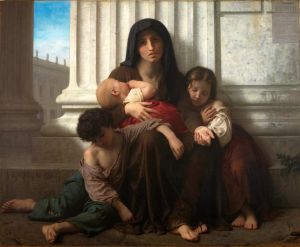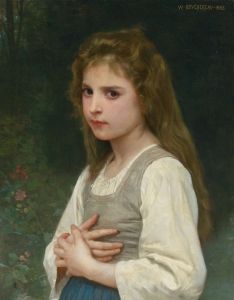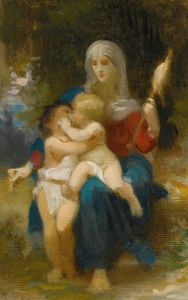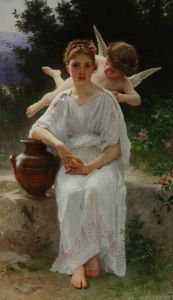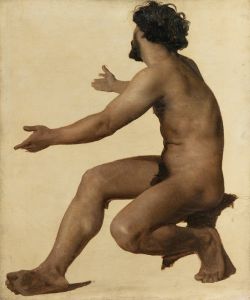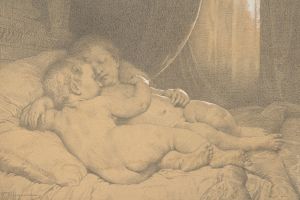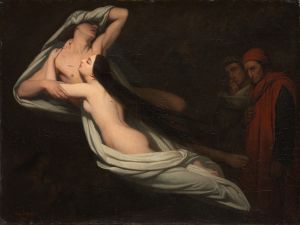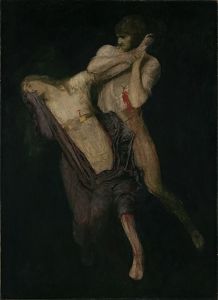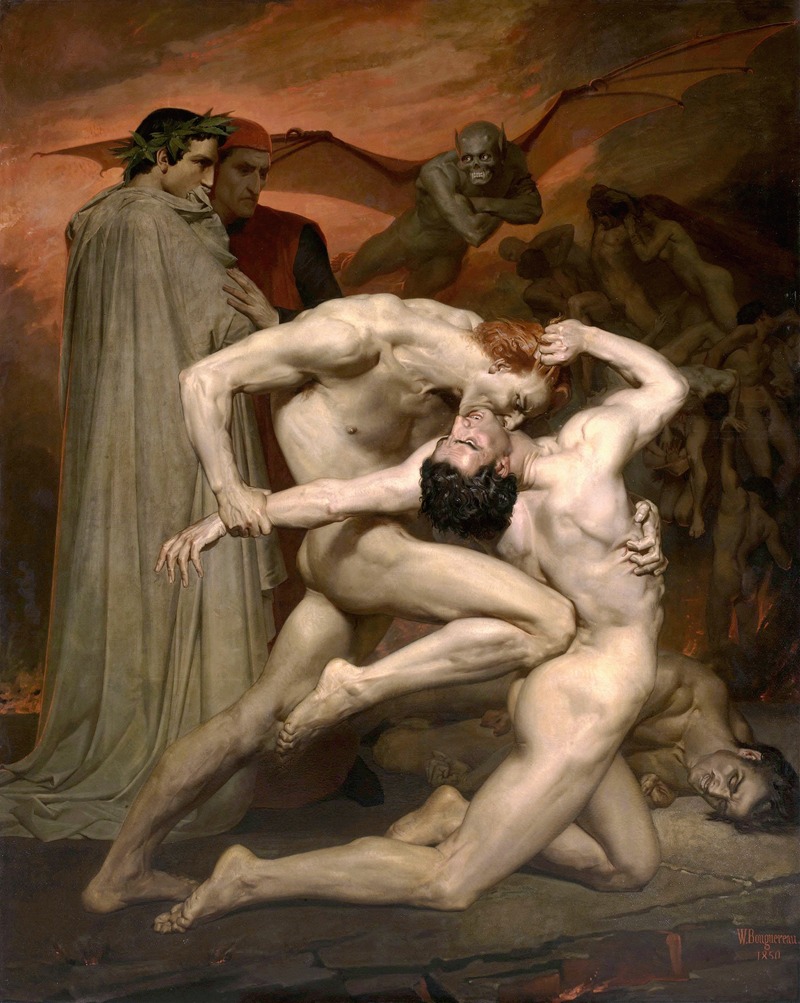
Dante and Virgil in Hell
A hand-painted replica of William Bouguereau’s masterpiece Dante and Virgil in Hell, meticulously crafted by professional artists to capture the true essence of the original. Each piece is created with museum-quality canvas and rare mineral pigments, carefully painted by experienced artists with delicate brushstrokes and rich, layered colors to perfectly recreate the texture of the original artwork. Unlike machine-printed reproductions, this hand-painted version brings the painting to life, infused with the artist’s emotions and skill in every stroke. Whether for personal collection or home decoration, it instantly elevates the artistic atmosphere of any space.
"Dante and Virgil in Hell" is a painting by the French academic artist William-Adolphe Bouguereau, completed in 1850. This work is one of Bouguereau's early masterpieces and showcases his exceptional skill in rendering the human form and dramatic scenes. The painting is inspired by a passage from Dante Alighieri's "Divine Comedy," specifically from the "Inferno" section, which describes Dante's journey through Hell guided by the Roman poet Virgil.
In this painting, Bouguereau depicts a dramatic and intense moment from Canto XXX of the "Inferno." The scene portrays a violent struggle between two damned souls, Capocchio and Gianni Schicchi, who are condemned to the Eighth Circle of Hell, reserved for falsifiers. Capocchio, an alchemist, is being bitten on the neck by Gianni Schicchi, who is known for his impersonation and deceit. The figures of Dante and Virgil stand to the left, observing the horrific scene with a mix of horror and fascination.
Bouguereau's attention to anatomical detail and his ability to convey emotion through the human body are evident in this work. The muscular tension and contorted poses of the figures reflect the agony and desperation of their eternal punishment. The artist's use of chiaroscuro, the contrast between light and dark, enhances the dramatic effect and draws the viewer's eye to the central action.
The background of the painting is dark and foreboding, with flames and shadows that suggest the infernal environment described by Dante. Bouguereau's meticulous technique and classical training are apparent in the precise rendering of the figures and the careful composition of the scene. The painting is a testament to Bouguereau's ability to blend classical themes with his own artistic vision, creating a powerful and evocative image.
"Dante and Virgil in Hell" was exhibited at the Paris Salon of 1850, where it received critical acclaim and established Bouguereau as a prominent artist of his time. The painting is currently housed in the Musée d'Orsay in Paris, France, where it continues to be admired for its technical excellence and emotional intensity.
Bouguereau's interpretation of Dante's "Inferno" reflects the 19th-century fascination with classical literature and the human condition. His ability to capture the psychological and physical torment of the damned souls, as well as the contemplative presence of Dante and Virgil, makes this painting a significant work in the history of art. It exemplifies Bouguereau's mastery of the academic style and his contribution to the artistic exploration of literary themes.






